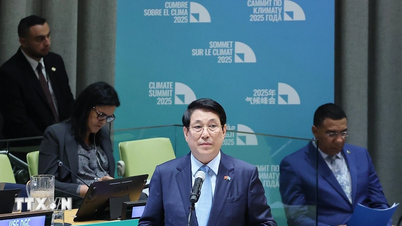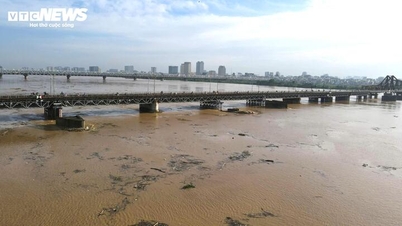US A team of experts at the University of Washington used a specialized sprayer to spray tiny sea salt particles into the clouds above the ocean, helping to redirect sunlight.

Simulation using unmanned ships to perform ocean cloud enhancement techniques. Photo: Interesting Engineering
Global warming is prompting scientists to look for solutions. Recently, a research team led by the University of Washington conducted the first outdoor test of ocean cloud brightening, a technique that deflects sunlight and could temporarily cool the planet, Interesting Engineering reported on April 5. The test took place in the San Francisco Bay Area.
Clouds naturally reflect sunlight back into space. Researchers are trying to intentionally enhance this natural phenomenon, redirecting more sunlight away from Earth. To increase the brightness, or reflectivity, of clouds, they inject sea salt aerosols into low-lying clouds over the ocean. This reduces the amount of sunlight that Earth absorbs, resulting in a cooling effect. This process of returning solar energy to space is sometimes called solar radiation modification or solar radiation management.
The team used a specialized sprayer on the Hornet's deck to spray microscopic sea salt particles into the air. In the full-scale version, the ship will also be equipped with a super-sized sprayer to spray particles.
In the test, the team evaluated the machine’s ability to consistently spray the right size salt particles into the air. The correct particle size is crucial to achieving the right cloud reflectivity. Smaller particles provide better reflectivity, while larger particles can lead to poorer reflectivity.
Despite its potential, ocean cloud brightening also raises concerns. Some scientists are skeptical of the technique, especially when applied on a large scale. The method has the potential to affect climate patterns, causing changes in ocean currents and rainfall patterns. Even the team testing ocean cloud brightening says they are studying “potential side effects.” Scientists are working to understand the effects of the technique through careful research and analysis.
But the best way to mitigate rising temperatures is to stop burning fossil fuels, which emit planet-warming gases. Without emissions falling, the goal of limiting global temperature rise to 1.5 degrees Celsius above pre-industrial levels is becoming impossible.
Thu Thao (According to Interesting Engineering )
Source link


![[Photo] Keep your warehouse safe in all situations](https://vphoto.vietnam.vn/thumb/1200x675/vietnam/resource/IMAGE/2025/10/1/3eb4eceafe68497989865e7faa4e4d0e)



















![[Video] Hanoi continues to lead the country in innovation](https://vphoto.vietnam.vn/thumb/402x226/vietnam/resource/IMAGE/2025/10/2/6651caeab9a04120a7eb185da97226c8)
















![[Photo] President of the Cuban National Assembly visits President Ho Chi Minh's Mausoleum](https://vphoto.vietnam.vn/thumb/1200x675/vietnam/resource/IMAGE/2025/10/1/39f1142310fc4dae9e3de4fcc9ac2ed0)






























































Comment (0)